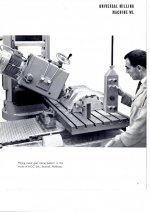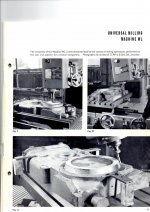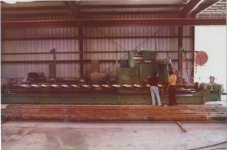sable
Titanium
- Joined
- Feb 7, 2013
- Location
- midlands,UK
I promised to put some pics from a Wadkin brochure on a thread started by PeterS on Wadkin of Leicester, England but on looking at that thread I realise it is on the Woodworking forum so I think this one is more appropriate here.
I have one of these machines which I use for general jobbing work.
Considering it weighs in at around 14000 lb it is quite flimsy and does not work particularly well with large face mills as the motor is only 5hp but the machine has travels of x = 48" y=31" and 44" spindle to table so it is a usefull machine to have around.
As far as I know this was Wadkins first entry into milling machines for metal ,the WL being aimed at pattern shops who made cast iron patterns for production foundries.
The brochure seems to be dated 1/65 and I don't think it was long before an improved version was brought out with many of the weakness put right.
A separate company on a different site seems to have been formed to manufacture the WL millers in the 1970's and later versions were available with CNC controls ,and I think it was this side of the company that made the, V4.6, V5.10 and V6.15 machining centres.
I have one of these machines which I use for general jobbing work.
Considering it weighs in at around 14000 lb it is quite flimsy and does not work particularly well with large face mills as the motor is only 5hp but the machine has travels of x = 48" y=31" and 44" spindle to table so it is a usefull machine to have around.
As far as I know this was Wadkins first entry into milling machines for metal ,the WL being aimed at pattern shops who made cast iron patterns for production foundries.
The brochure seems to be dated 1/65 and I don't think it was long before an improved version was brought out with many of the weakness put right.
A separate company on a different site seems to have been formed to manufacture the WL millers in the 1970's and later versions were available with CNC controls ,and I think it was this side of the company that made the, V4.6, V5.10 and V6.15 machining centres.








